




Introduction to Reptiles
Reptiles may be one of the few truly unique animals, and their forms, behaviours, and variety only serve to further this claim. Here, we will define reptiles, provide a list of reptiles, and discuss the types and traits of these fascinating animals.
Reptiles can be found anywhere in the world, with the exception of the arctic and tundra areas, which have exceptionally low temperatures. As a result, most reptile species may be found in areas with a warm environment and lots of sunlight, such as deserts, rainforests, and tropical regions. Reptiles have a more distant relationship with mammals than with birds.
Characteristic Features of Reptiles
The class of vertebrate animals known as reptiles includes creatures with scaly skin, cold blood, and the capacity to produce eggs.
Ectothermic organisms like reptiles rely on heat and light for metabolism and energy.
Types of Reptiles
There are four primary categories of reptiles, and each category has a large number of species.
Crocodilia
Sphenodontia
Squamata
Testudines
List of Some Reptile's Names
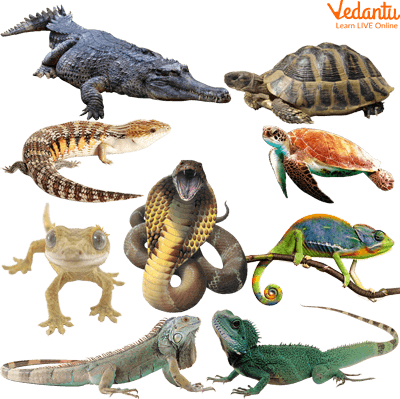
Types of Reptiles
Crocodiles
Large reptiles known as crocodiles are found in the waterbodies like rivers, oceans, lakes, etc. They have a V-shaped snout.
Alligator
They have overhanging teeth that fit into the lower jaw and a U-shaped snout.
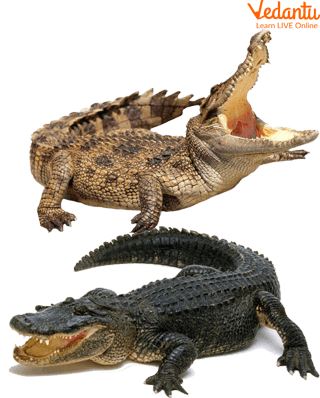
Difference in Crocodile and Alligator
Turtles
There are six different species of box turtles, including the Eastern box turtle (Terrapene carolina carolina). It is found throughout the eastern United States, from Texas to the Great Lakes region. Previously, any aquatic turtle may be referred to as a "terrapin," but today, the Diamondback Terrapin, or Malaclemys terrapin, is virtually always meant.
Tortoise
Though the word "tortoise" has diverse connotations around the world, it is generally used to describe long-lived, slow-moving members of the Testudines family. Some tortoises have been recorded to live for more than 150 years, and some have even lived for over 250 years.
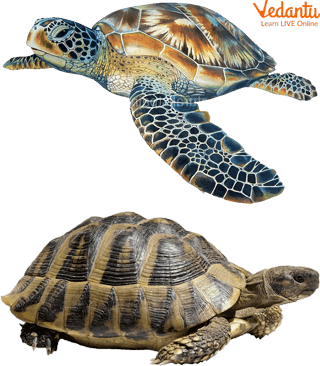
Difference in Turtle and Tortoise
Snakes
A class of reptiles known as snakes is distinguished by the absence of limbs and legs. There are 3,900 different species of snakes in the world, and all but Antarctica are home to them.
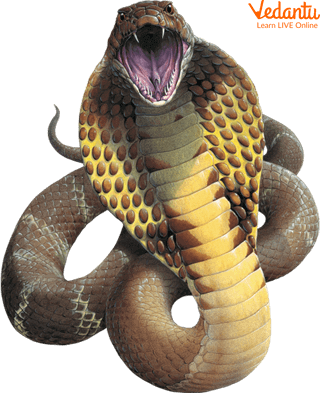
Snake
Gavialis
The Caribbean, Central America, and South America are home to caimans, which are somewhat small, short-snouted crocodiles. They can consume insects, lizards, amphibians, mammals, fish, and snakes, though their food alters as they age.
Tuataras
There are two types of reptiles called tuataras that live in New Zealand and the nearby islands. They are connected to a group of reptiles whose members all but vanished 60 million years ago but which existed 200 million years ago.
Lizards
The only lizards known to "fly" are those belonging to the reptile genus Draco. They glide from tree to tree instead of flying using their ribs and the membrane between them.
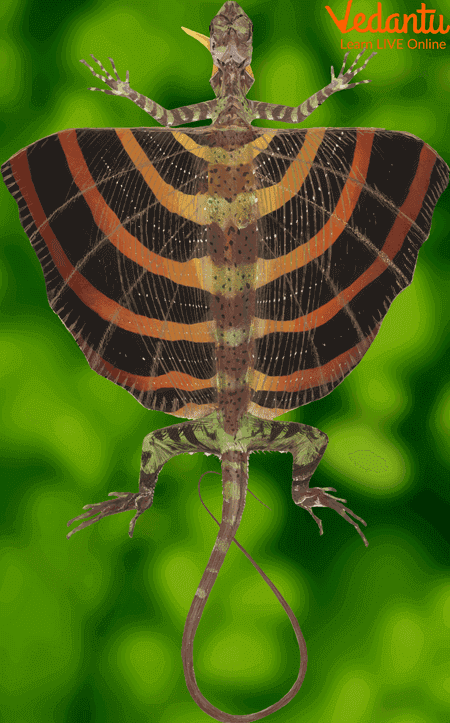
Draco Lizard
Caimans
The Caribbean, Central America, and South America are home to caimans, which are somewhat small, short-snouted crocodiles. They can consume insects, lizards, amphibians, mammals, fish, and snakes, though their food alters as they age.
Worm Lizards
There are various species of lizards that lack arms and legs and are members of the Amphisbaenia family. Worm lizards have smaller right lungs than genuine snakes, who have smaller left lungs.
Interesting Facts about Reptiles
Ectothermic, or getting their body heat from outside sources, is a characteristic of reptiles. When it's chilly, reptiles enjoy the sun; when it's hot, they look for cover or water.
The planet's longest-living creatures are reptiles. Over 150 years are possible for the Aldabra tortoise.
Reptiles often have cool, dry skin because they lack sweat glands, which prevents them from being slimy.
The same protein that makes up our hair and fingernails, keratin, also builds up a snake's scales.
Summary
This article discusses reptiles, their habitat, and some interesting facts about them. Names of a few reptiles, along with the images, are presented above. Numerous turtle species exhibit temperature-dependent sex determination. This implies that the gender of a hatchling can be determined by the environment's temperature during the embryo's growth.
FAQs on Reptiles Name
1. What is the key characteristic feature of reptiles which makes them different from amphibians and mammals?
Mammals and reptiles are distinct. Mammals have hair, whereas reptiles have living young and colder body temperatures. Although certain reptiles spend most of their lives in or near water, they differ from amphibians because their young ones do not undergo metamorphic maturation stages.
Reptiles and other ectothermic creatures need heat and light for metabolism and energy. Unlike amphibians, who are poikilothermic and unable to regulate their body temperature, mammals can control their body temperature.
2. Write a note about crocodiles and alligators.
Alligators and crocodiles are members of the Reptilia class, yet they are morphologically distinct from one another. In the oceans off the coasts of the Americas, Australia, Africa, and Asia, large reptiles known as crocodiles can be found. Crocodiles can be distinguished from alligators by their V-shaped snouts.
The only remaining alligator species are the Chinese alligator and the American alligator (Alligator mississippiensis) (Alligator sinensis). They differ from crocodiles in that they have a U-shaped snout and overhanging teeth that fit into the lower jaw.









